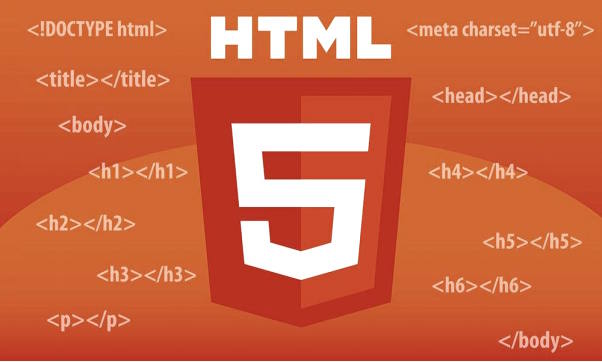Mobile connectivity becomes easier with the embedded SIM system, also known as eSIM, which represents a contemporary communication technology. Digital technology uses convenient and integrated features to replace physical SIM cards with modern equivalents. Through which procedures do HTML, together with contemporary web technology, enhance the management of eSIM solutions? We will analyze web-based interface applications for eSIM integration throughout this article while discussing the role of HTML in that progress.

eSIM: A New Era in Mobile Connectivity
The wireless technology and eSIM Plus enables users to control and activate mobile networks automatically through its advanced management features, which replace standard physical SIM cards. Three different markets experience the most advantages from this technology:
- The application of eSIM technology by travelers during their journeys results in network switching benefits due to its ability to eliminate the purchase of new SIMs.
- The majority of IoT applications identify physical SIM cards as problematic for their operational requirements.
- Enterprise-level users can access a mobile management system that provides complete control functionalities.

With recent legislative changes, we may see big changes in web development accessibility going forward
Easily accessible SIM profile management solutions for eSIM require users if this technology is to achieve its highest possible standard. The required solutions in this scenario come from HTML and web applications.
How HTML Can Support eSIM Integration in Web Applications?
Web technology alongside HTML delivers improved browser-based eSIM management, which surpasses both supplementary applications and ordinary physical SIM cards.
Web-Based Activation of an eSIM
The combination of web applications with HTML and JavaScript enables Web API usage to transform how users activate and manage eSIMs in the current market. Users establish eSIM profiles right from their browser interface without needing any physical SIM cards or additional program software. How web-based eSIM activation works:
- QR code scanning. The browser sends requests to an eSIM management system that starts activating the downloaded profiles. The eSIM management system receives commands from the browser tool that initiates both profile downloads and profile activation processes.
- Direct subscription selection in the browser. Users need to access login pages which their communication companies deliver through web portals. Users pick their subscription plan through a single click to activate their eSIM.
- Instant profile download & activation. The chosen eSIM profile gets automatically installed by the system into the device. Users avoid visiting physical stores as the activation process now requires only minutes instead of hours.

A device can automatically receive the selected eSIM profile through its system. Users no longer require store visits yet minimize the hours into just minutes for their services. A traveler can buy data packages from eSIM service providers through their website to activate their eSIM while skipping the need for local SIM cards during their entry into new countries.
eSIM Management over Web APIs
The convergence of HTML5, WebAssembly, and modern Web APIs is paving the way for a next-generation eSIM experience, making mobile connectivity:
- Users can operate their subscription management using any available device.
- Works across various operators and devices.
- Eliminates dependency on physical SIMs.
These APIs can:
- This browser enables users to view the available eSIM profiles using its web-based display interface.
- People can choose operators inside their eSIM profile with the help of the browser interface.
- Users actively using the Internet can deactivate older eSIM profiles using this system instead of using typical application or store methods.
Mobile operators provided users with web-based tools so they could easily control their active eSIM profiles using a streamlined interface that they accessed through their websites.
Security and Privacy in Web-Based eSIM Management
The security of eSIM management takes center stage in systems that deploy browser-based operations. The management process of eSIM technology achieves security through HTML collaboration with TPM and Secure Enclave, along with HTTPS and WebAuthn technologies. Either Secure Enclave or TPM functions as hardware solutions that provide secure eSIM data storage.

The security system works to prevent unauthorized access to user accounts as part of its deployment strategy. Users can maintain secure data protection by using the encrypted web communication which results from the combination of HTTPS and WebAuthn. Users must authenticate themselves using fingerprint recognition or facial recognition or fingerprint before the eSIM management web page will show SIM profiles.
HTML and eSIM: The Future Ahead 🚀
Next-generation eSIM experience is possible because the convergence between HTML5 and WebAssembly finally reaches modern Web API-meaning mobile connectivity. Why web-based eSIM solutions will dominate:
- Global subscription flexibility. The device lets users change wireless network carriers regardless of needing to replace the SIM card.
- Cross-device compatibility. Devices and operator systems will not create limitations for this system.
- Reduced dependence on physical SIM distribution. No plastic waste and no heavy logistics handling.
- Secure & seamless management. eSIM transactions are secured using end-to-end encryption over web portals.
HTML interfaces will further ease mobile subscription management. Seamless switching of networks from the comfort of one’s home without actually having to physically visit the carrier stores. It integrates with IoT devices. The future of web-based eSIM management is coming soon and will benefit not just individual subscribers or travelers but also enterprises, IoT ecosystems, and even telcos.